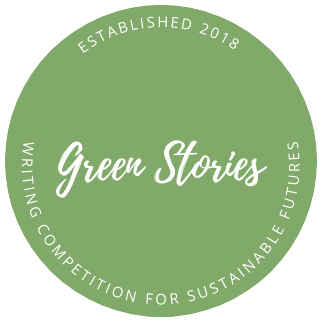What story is it in?
Carbon offsetting is a way of “making up” for the CO2 emissions countries, companies and people produce. It was presented in the story called The Assassin.
Devanika tapped in a flight from London to Dhaka. It was nearly three tonnes. She clicked on the offset button and was faced with a list of different projects of varying costs, ranging from twenty to eighty pounds.
‘How do I know which project is best?’
‘You can choose based on your values. Many have additional benefits. We have a peatland restoration project in Indonesia that not only prevents carbon loss, but improves biodiversity and also the quality of life for indigenous people.’
The Assassin
The differences in costs to offset a tonne of CO2 can be confusing and often reflect that fact that technologies haven’t yet achieved economies of scale. For example, investing in the new technology of direct air capture may cost hundreds of dollars per tonne compared to planting trees which may just cost $20 dollars per tonne, but this reflects the investment needed to develop the technology.
The idea of carbon credits being used to fund green innovations and carbon dioxide removal projects occurs in many other stories too.
Remarkably, peat fire prevention, biochar and ice albedo carbon credits cover much of the cost of the operation. Who would have thought that restoring the planet might be self-funding?
Refreeze the Arctic
Tell me about these carbon credits,’ said Mick. ‘I’ve always been curious about them. What are the biggest opportunities?’
‘Long term, high-permanence carbon credits,’ said Donna. ‘There’s a terrible shortage and they trade for ridiculous prices.’
‘What counts as a good carbon credit?’
‘Biochar. Mineralisation. Not much else. They both store carbon in the ground for hundreds of years – and improve the soil at the same time. Pretty cool.’
Clive raised his head from its position side-down on the bar.
‘So, Donna, here’s a thought. Could we get carbon credits if we were able to shut down a long-term source of CO2?’ Mick asked.
‘Maybe. Things like that depend on protocols being in place. But there are loads of new ones being written all the time.’
‘So could we put out coal seam fires? Like the one that’s been burning for thousands of years down the road at Wingen there, at Burning Mountain?’
Frackers
More about Carbon Offsetting
Carbon offsetting is a way of “making up” for the CO2 emissions countries, companies and people produce. This video from the BBC explains the concept:
Read More
However, there are criticisms that the wealthy are simply using carbon offsetting programmes to avoid responsibility. It is a good mitigation strategy, but it cannot be the only solution, which is why personal carbon allowances are a good idea.
If done well, offsetting can indeed contribute to net zero strategies, but if done poorly it only adds to the masses of greenwashing. For example Chevron has been critiqued for using offsets that do not meet expected criteria and may even be doing more harm than good – see report. The University of Oxford has outlined new principles to highlight how offsetting should be done.
These include:
- Prioritise reducing your own emissions first, ensure the environmental integrity of any offsets used, and disclose how offsets are used.
- Shift offsetting towards carbon removal, where offsets directly remove carbon from the atmosphere;
- Shift offsetting towards long-lived storage, which removes carbon from the atmosphere permanently or almost permanently; and
- Support for the development of a market for net zero aligned offsets.
An example of a company that successfully offsets its carbon emissions, and has done since 2007 is PwC (or PricewaterhouseCoopers). You can read more about their example here.
Cogo is an example of an app that works with banks to help them and their customers (1) measure, (2) reduce, and (3) offset their carbon emissions. Cogo works with world-leading banks such as Natwest, Commonwealth Bank and TSB. Every transaction contributes to our carbon footprint, by using apps like Cogo we can start to reduce our footprint as we become aware of the individual impact we’re having on the planet.
Nori is a “carbon removal marketplace”. Essentially the idea is that businesses can offset the carbon that businesses can’t yet avoid creating. So far they have removed over 86K of carbon from our atmosphere.
Read Less
Interested in progressing this solution further?
| Actions for Policymakers | |
| Actions for Funding Bodies | |
| Actions for Businesses | (1) Use carbon removal marketplaces such as Nori to compensate for the carbon that your business cannot avoid emitting (yet). |
| Actions for the Public | (1) Bank with institutions that use apps such as Cogo e.g., Natwest, TSB, Commonwealth Bank. (2) |
